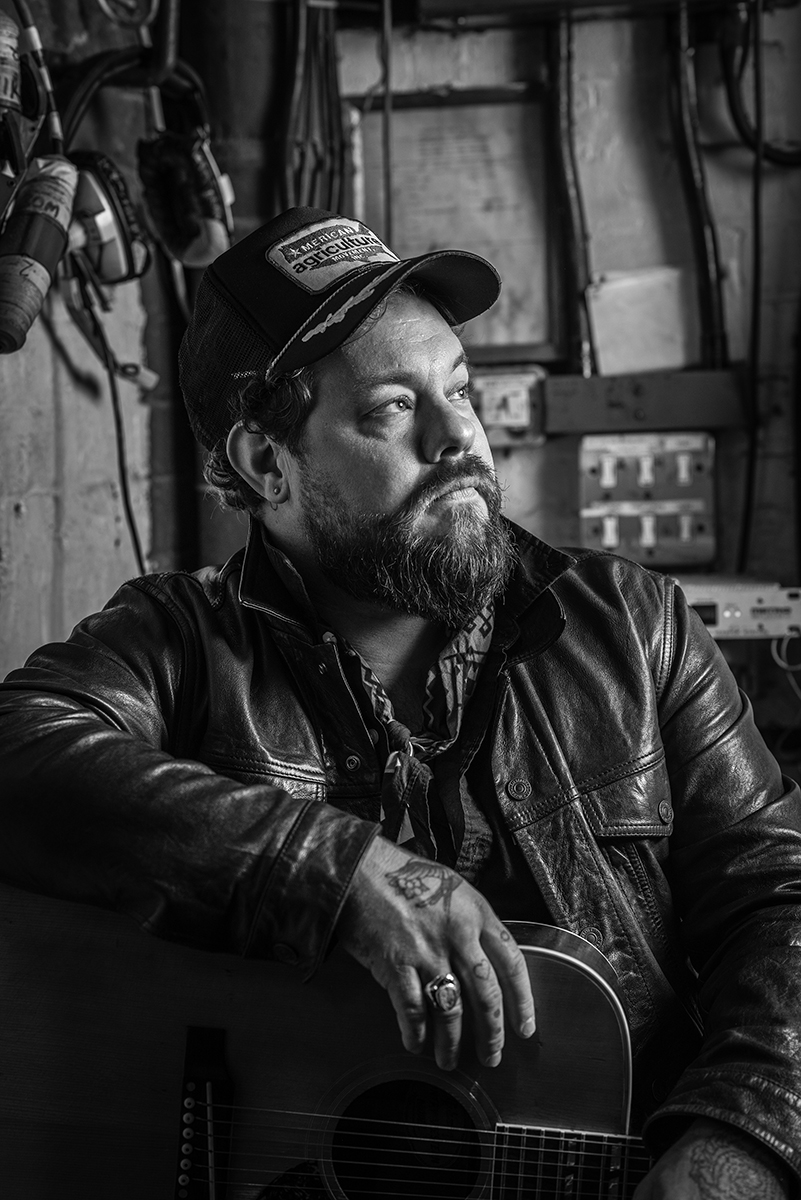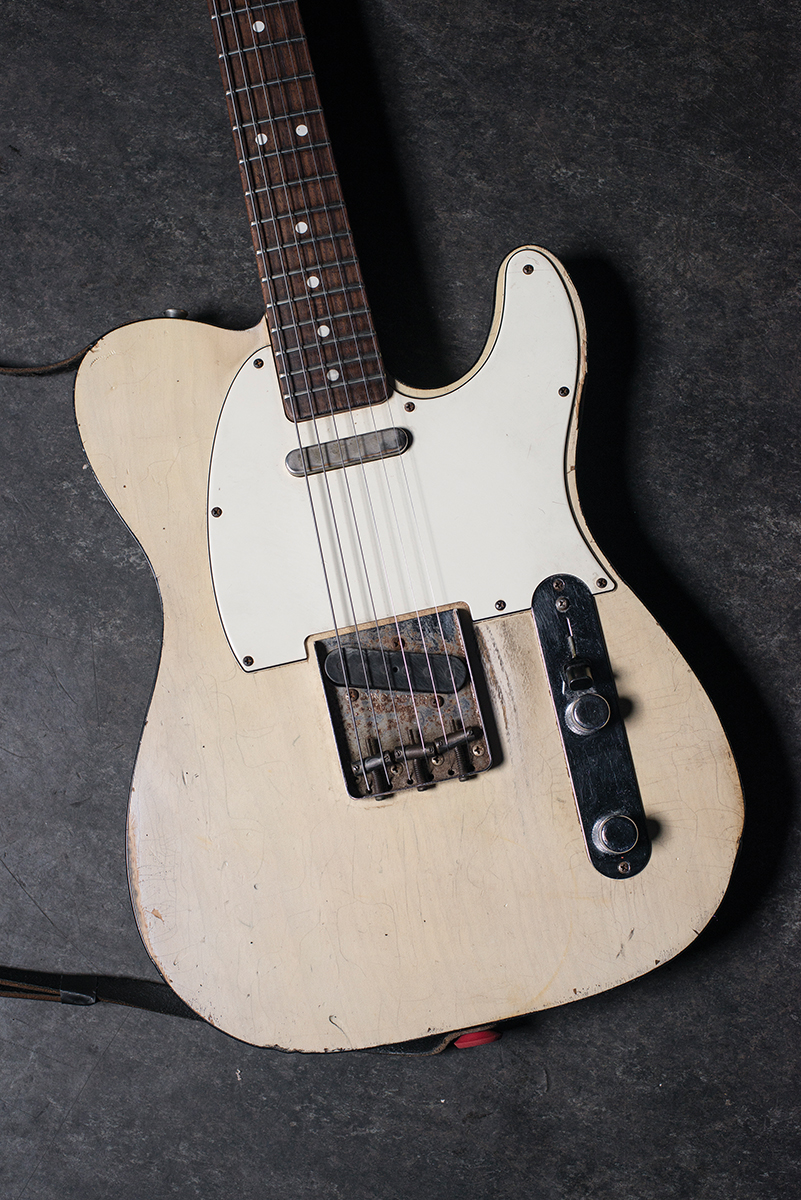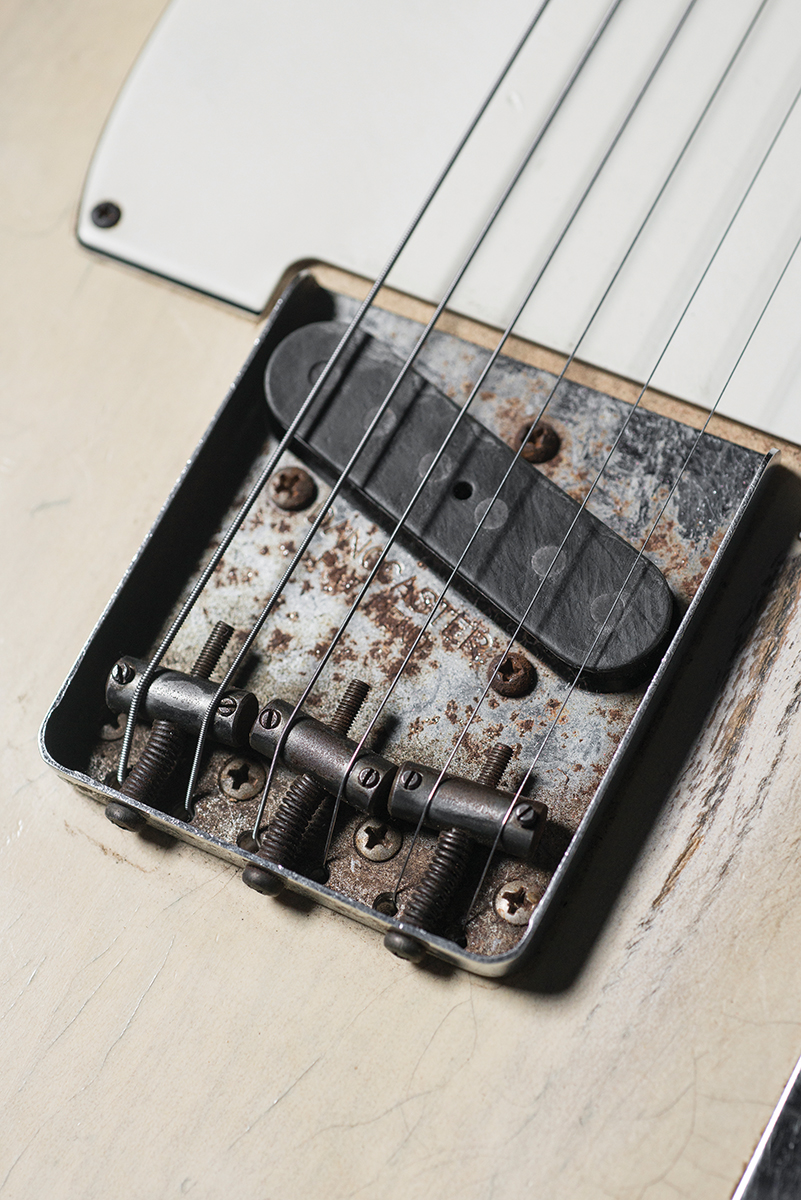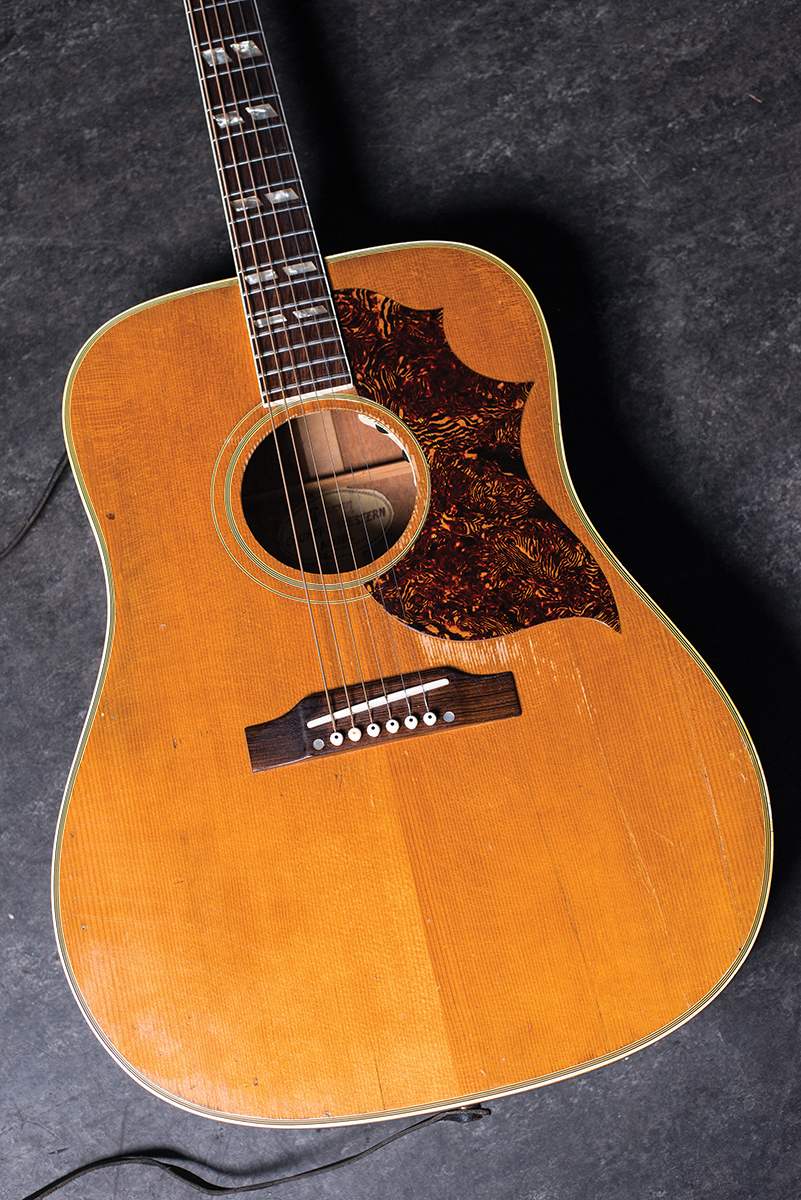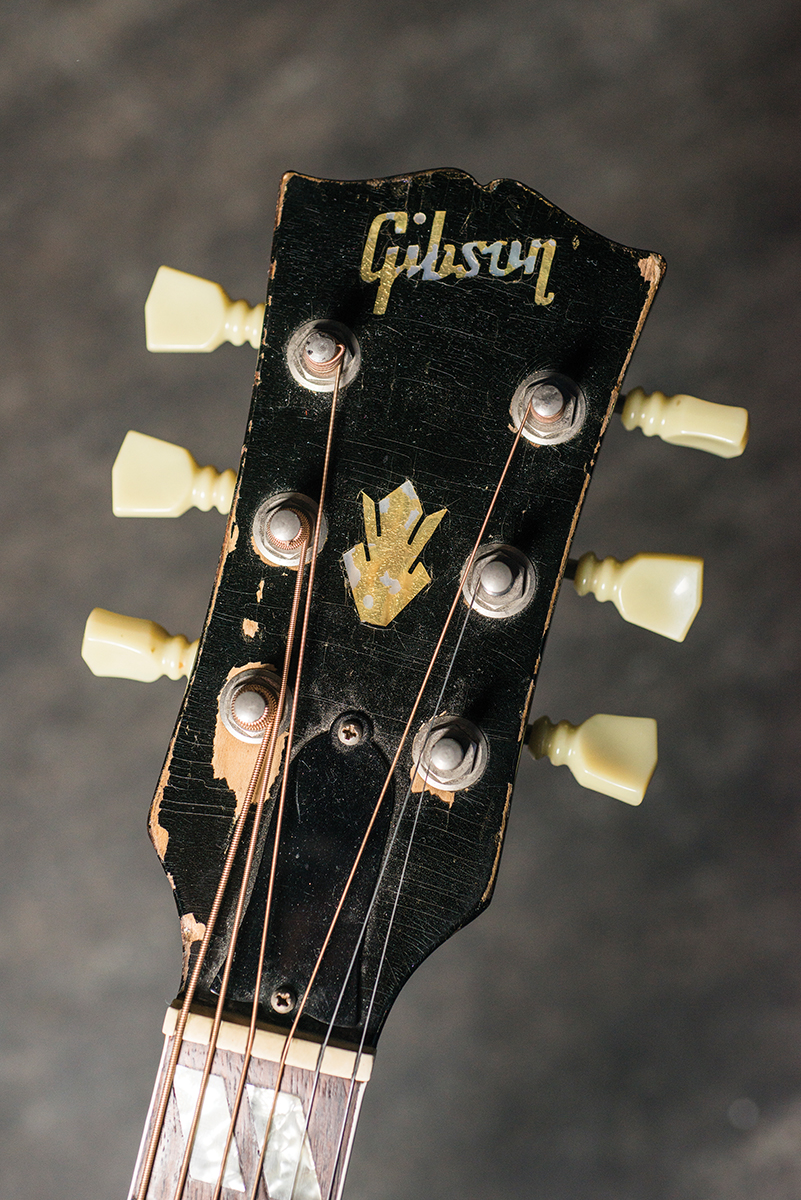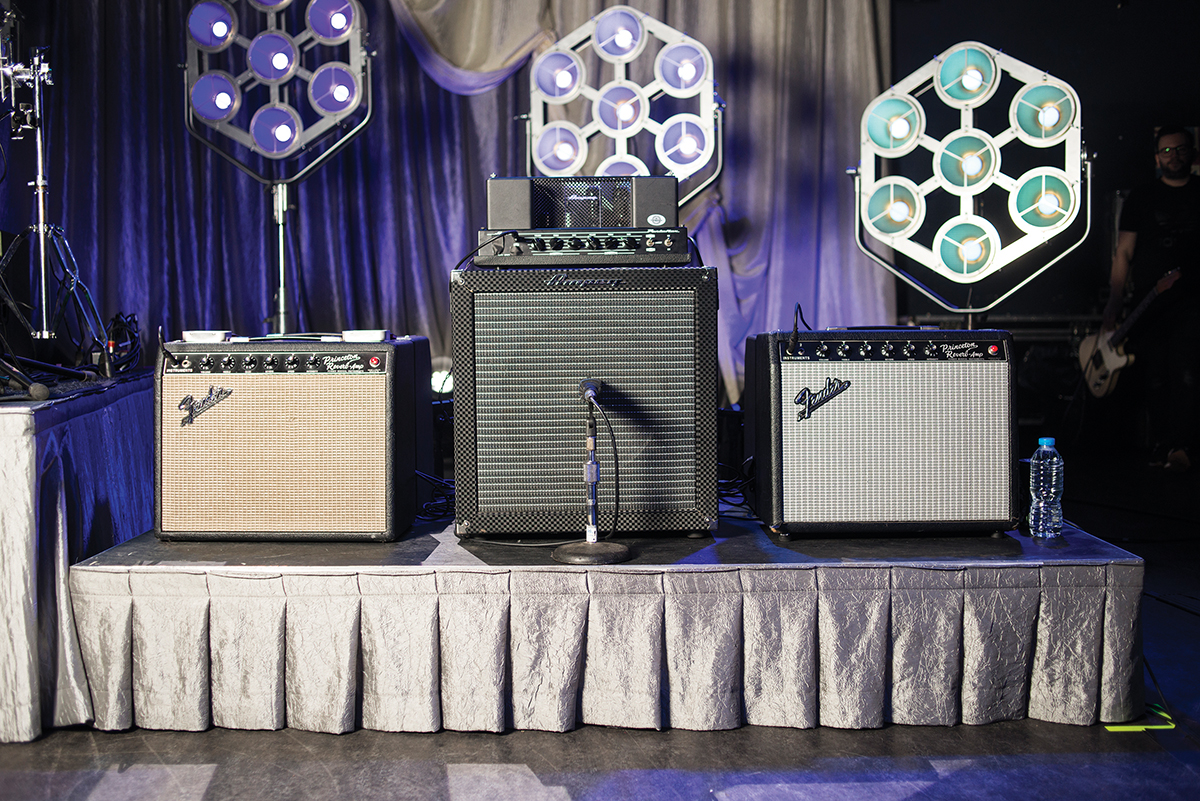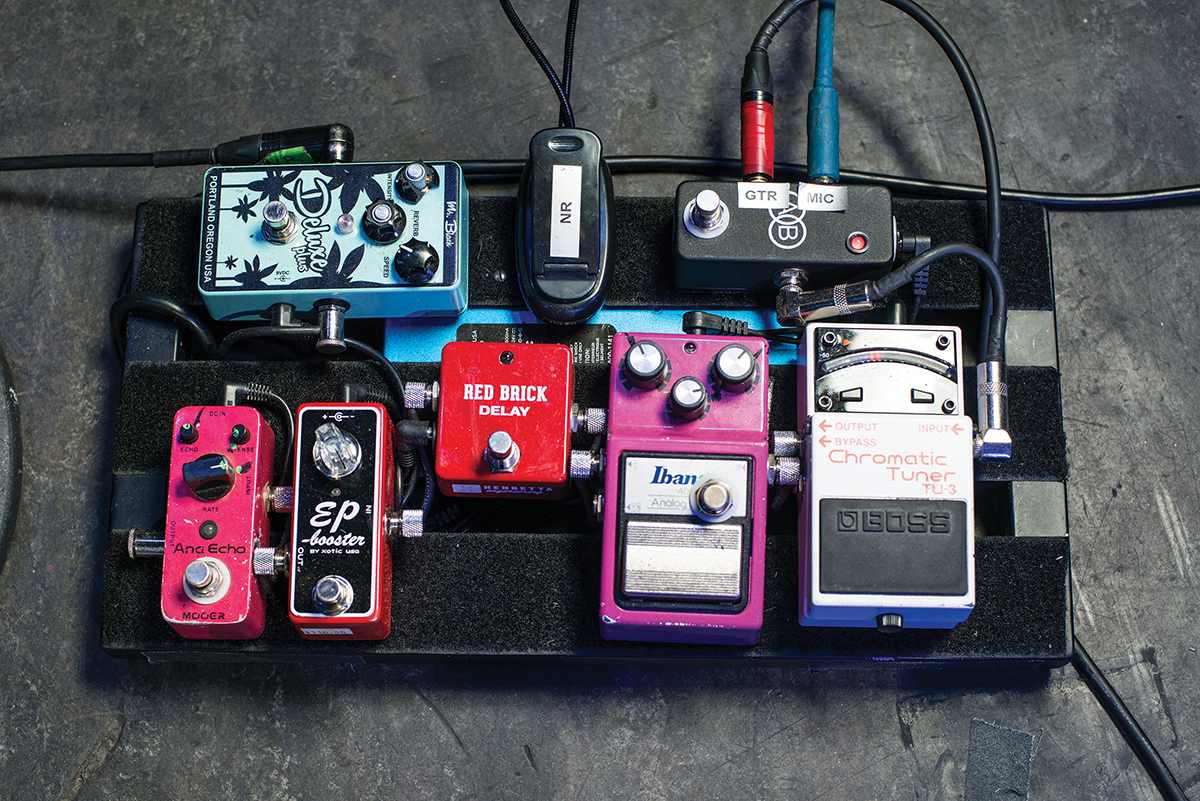Interview: Nathaniel Rateliff & The Night Sweats
As Colorado’s own rock ’n’ soul sensations Nathaniel Rateliff & The Night Sweats return with a second hip-shaking studio album, Chris Vinnicombe sits down with their main man to talk guitars, influences and life on the road…

Photography Eleanor Jane
Nathaniel Rateliff’s road to stardom is about as far from an overnight success story as it gets. Childhood friends Rateliff and bassist Joseph Pope III left their small hometown of Hermann, Missouri and moved 800-or-so miles west to Denver in 1998. For the next 15 years, despite establishing a considerable local following and releasing music via Rounder Records and Decca, none of Rateliff’s band or acoustic solo projects caught fire.
In 2013, in a last-ditch attempt to give up his day job as a gardener – career prospects were limited, as he had no high-school diploma, having quit school at 13 soon after his father was killed in a car accident on his way to church – Rateliff enlisted the services of his best friend Pope alongside a cast of other local musicians. With the aim of writing songs that sounded like a fusion of The Band and Sam & Dave, Nathaniel Rateliff & The Night Sweats were born.
Rateliff, Pope and co’s big break came in August 2015, when they were invited to perform live to an audience of millions on US television courtesy of The Tonight Show host Jimmy Fallon. A rip-roaring rendition of the single S.O.B. – which saw the singer deliver a performance somewhere between a turbocharged Van Morrison and vintage James Brown – received a standing ovation from the studio audience. It certainly didn’t hurt album sales either. The band’s eponymous debut peaked at No. 2 in the Billboard Top Alternative Albums Chart. According to reports, Paul McCartney even called Fallon the following day to ask: “Who was that guy?”
Although more of a rosewood man when it comes to Fender guitars Nathaniel is a big fan of this maple-Necked ’72 Thinline Telecaster
S.O.B., with its rousing refrain of ‘son of a bitch, give me a drink’, is something of a Trojan Horse – what sounds like a party anthem on first listen is actually a song about the withdrawal symptoms Rateliff faced when he gave up alcohol for a time in an effort to save his marriage.
And although The Night Sweats are known for their foot-stomping live shows, there’s pain in their bones, too, as evidenced by 2018’s Tearing At The Seams – a new album that combines the funk and soul breaks of Shoe Boot and Intro with real-life break-ups in Still Out There Running and Babe I Know, both of which are informed by Rateliff’s recent divorce.
This Danocaster Single Cut is Nathaniel’s guitar of choice in a live setting
THE SESSIONS
“We first went away to New Mexico and rented a house down there that we set up as a studio,” recalls the frontman when we catch up with him between dates on the Night Sweats’ UK tour. “We first started working on what was gonna be possibly demos, but then I talked to [Tearing At The Seams producer] Richard Swift about taking those if we thought they were right and trying to make ’em work. So we did some of that.
“We did a lot of playing live in the room down there and a lot of us all playing in the same room out at his place as well. Since the first record, we’ve really become a band, so I just kind of wanted to feature that and also to use the way they play to influence me to write differently than I normally do.”
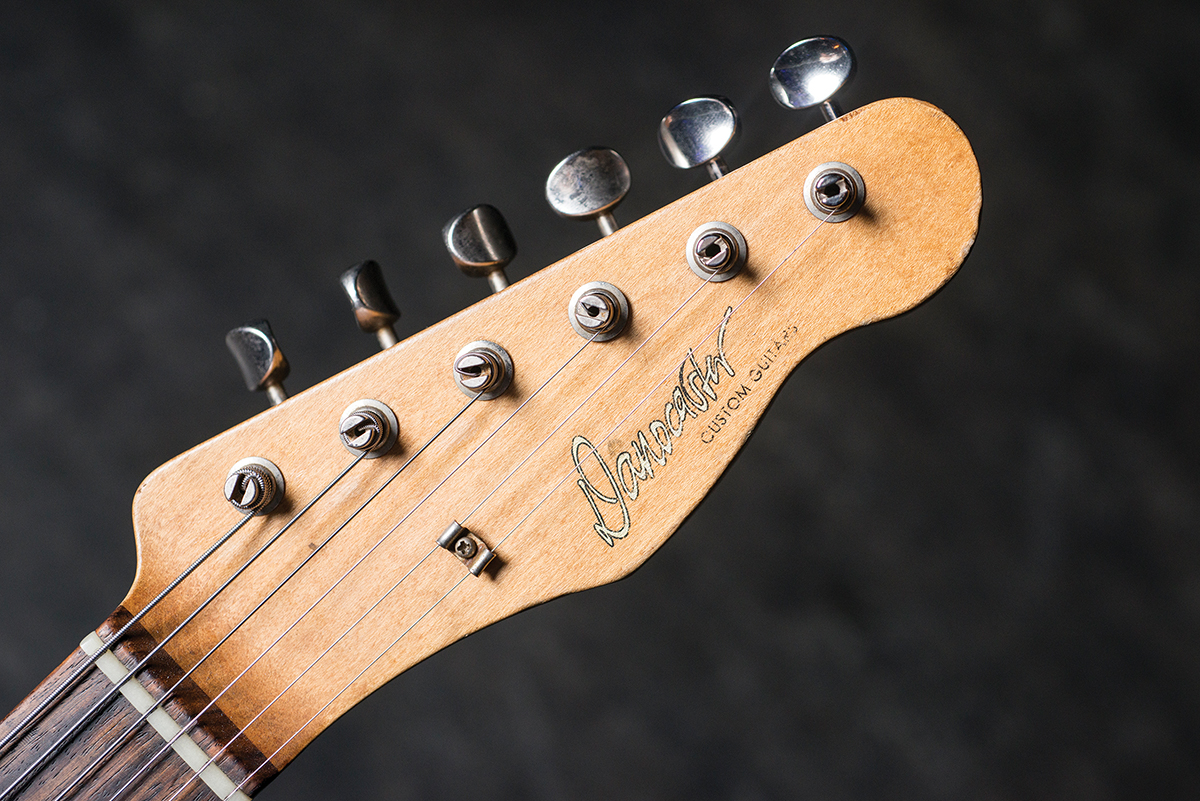
Whether holed up in New Mexico or in Swift’s National Freedom studio in Oregon, the songs came together organically: “It was pretty natural with Richard. A lot of times, we’d just be jamming, trying to figure out the structure of the song together, and just kind of running through it, over and over again, and then once in a while he’d just peek his head in and be like: ‘Sounds good guys!’ So we’d usually play it until we’d nailed the structure and when we’d play it all the way through, that would be the take.”
When recording the guitar parts on the band’s debut album, Rateliff “did kinda everything”, solos included, aside from one part played by drummer Patrick Meese. This time around, Rateliff was focused more on writing, and leaned heavily on The Night Sweats’ other guitarist, Luke Mossman. “I’m kind of more of a melodic guy,” says Rateliff. “But Luke studied jazz in school and so it’s been nice to kind of learn some things from him, really just like my chord knowledge.
Sometimes I’d be kicking around with an idea and I’d get kinda stuck in the progression and he’d be like, well, you could do this or you can do this… so that was kinda helpful, but the parts just kinda happen. I think the only little lead thing I play on the whole record is on Coolin’ Out, which ended up being kinda last minute…”
Nathaniel got this offset Danocaster model to sub for the Jaguar that he used for recording the album
The raw energy spilling out of the grooves of both of The Night Sweats’ long players gives the impression that the band’s transition from studio to stage is a relatively easy one. “Well, it is now, but for a moment there, we were like: ‘Shit, we have to learn how to play these songs!’” admits the singer. “We would be sitting in a room together and the song from start to finish would take about three hours. And then you just move on. So you know, that was like last year that we were working on that, so some of the stuff we had to relearn.”
Although Rateliff still plays a lot of acoustic guitar, his six-string influences include a range of players, many of whom are steeped in the blues, but there’s indie-rock in the mix, too, and plenty more besides: “I really love CW Stoneking, he’s an Australian, I guess he does like jungle-boogie kinda stuff. As a kid, I was a pretty big Duane Allman fan. I went through a lot of different phases as a young kid.
I love Jimi Hendrix… I went through the whole hippy phase and then Jonny Greenwood was definitely a favourite at one point, too. “I really dug 60s and 70s guitar, but I’d keep picking away and there’d be different things that I’d learn and stuff that I liked and I’d sort of adapt that, and do my own variation of it, y’know? Whether it be like, chicken-pickin’ or doublestops or whatever, slide…
Nathaniel’s main acoustic is the 1967 Gibson Country Western that he bought with the winnings from a dice game
I love playing slide guitar, but I can’t ever seem to make the sound of it work for what we’re doing. It really only appears if I’m playing dobro on a song, which we haven’t done on this record, but I did on a couple of other things.”
When it comes to gear, Rateliff’s poison is currently Gibson acoustics from a very specific period: “I’ve been kind of collecting stuff throughout the years and back home, I have acoustics from varying different years. But for recording, I love the necks on Gibson acoustics from ’65 to ’67 – they’re just so tiny, almost like an SG. I used to have the bigger Martins with a wider, almost like classical neck, which is fine, but I bought one of those 60s Gibsons and everything I played sounded like Beggars Banquet or some Stones tune and I was like, ‘Man, maybe that’s what they were doin’!”
Although Rateliff has brought a 1965 Gibson J-200 along for the ride on the band’s European dates, he currently favours a model built two years later: “I thought I’d love that jumbo but I actually prefer my Country Western, which is a ’67, which I won. It was Jamie Mefford’s. He’s our front-of-house guy and he also helped us co-produce this record, was there for all the demos and set up the studio.
“He had this ’67 Country Western laying around and he was kind of baiting me with it. He let me borrow it and I was like, man this thing fucking just sounds so good! And we ended up having a little in-the-band gambling thing that I ended up winning by playing dice and Jamie was like: ‘How much did you win?’ I told him and he was like: ‘That’s kind of about what I wanted for that guitar,’ and I was like: ‘Well, there you go…’”

Inevitably, though, one guitar is never enough… “I was trying to work out what was going to be most useful,” says the singer, “especially travelling to Europe, since there’s kind of a mix of acoustic songs on the record with pretty drastic tunings – Hey Mama is in D, the whole thing’s in drop D – so, it’s kind of a pain in the ass for our tech to switch from D to E flat and all that stuff, and then capo… so that’s why I have the three acoustics.
The third one I have is a ’55 J-160E, and that’s what I’ve been using for You Worry Me and a couple other things. It’s quite a bit different than the Country Western, it’s a little more boxy I think, but I really like it.

“When I used to play solo I always used a classical guitar through an amp, and that was really kind of my instrument for a long time. But I’ve fallen in love with those late-60s Gibson acoustics. I just got an almost identical Country Western to the one I have, to have more consistency. Then I won’t take the J-200 out with me anymore. They just have this voice to them, they are really strummy and open, and that’s kind of what I’m looking for, for everything I’m doing with this band. I have an LG-2 at home, like a ’46, and I love that thing and I actually begrudgingly put a pickup in it, which means I’ve put a little bigger hole where the endpin was.”
Nathaniel’s J-160E is one of three acoustics that he takes out on tour with him
FRIENDS ELECTRIC
When it’s time to plug in, Rateliff leaves Kalamazoo behind and heads towards Fullerton. “On the record, I ended up getting an older Jaguar that I really liked in combination with the Blackface Princeton,” he reveals. “I mean, really I plugged it in and was like: ‘Wow, that kinda sounds like shit!’ And that was kind of what I went with! I think that sometimes my favourite guitars aren’t the best sounding, but y’know they have a lot of character. But they’re not perfect-sounding.”
For live duties, his electrics are a mixture of bolt-ons built by luthier Dan Strain and a vintage Fender: “Dan made me a white Danocaster Single Cut – I love that thing – and I have the Lollar Special in the bridge position. Even Dan was like, well that doesn’t sound like a Tele… okay, whatever! Instead of the Jaguar that I used on the record, I ended up getting another Danocaster Offset. My other Tele is a Fender ’72 Thinline with a maple neck, but I prefer the rosewood stuff, usually.”
Of all the instruments that the Night Sweats take on the road with them, Rateliff’s remarkable raw soul voice is the most important: “I�’ve been trying to be more disciplined, but I still probably drink more than most people do!” he laughs. “Some of the guys will go out, but my voice is my main responsibility and if I can’t sing, then we don’t have a show. Sometimes, you can’t really go out – it can be kinda lonely, but I’m learning how to take better care of myself, slowly but surely.”
Vocally, his influences range from all-time soul greats to bands that – like his own – made backing vocals a key component of their sound: “I was always a huge Sam Cooke fan. I always liked people that had really unique things in their voice or really great control, like Nat King Cole, the way he enunciates, his phrasing. The same thing with Sam Cooke.

But then there’s certain things I like about the back-up singers on a Desmond Dekker record, or even the early Wailers stuff, the Studio One stuff. Some of the things I like are perfectly imperfect. Part of the Night Sweats thing was having more than one singer. I wanted everybody in the band to be able to sing.”
That sense of humanity and perfect imperfection is writ large in the Night Sweats sound. And even in the digital age, there’s still no substitute for the communion of musicians playing live, together: “On Babe I Know, it was myself and Patrick on drums, Mark [Shusterman] was on piano. And I was playing a little metal-bodied National and I had a Sennheiser 421 on it and that was also what I was singing into. I just propped the guitar up on my knee and leaned into it. I was like, that sounds good to me! That’s what we went with and that was us just playing the take live.
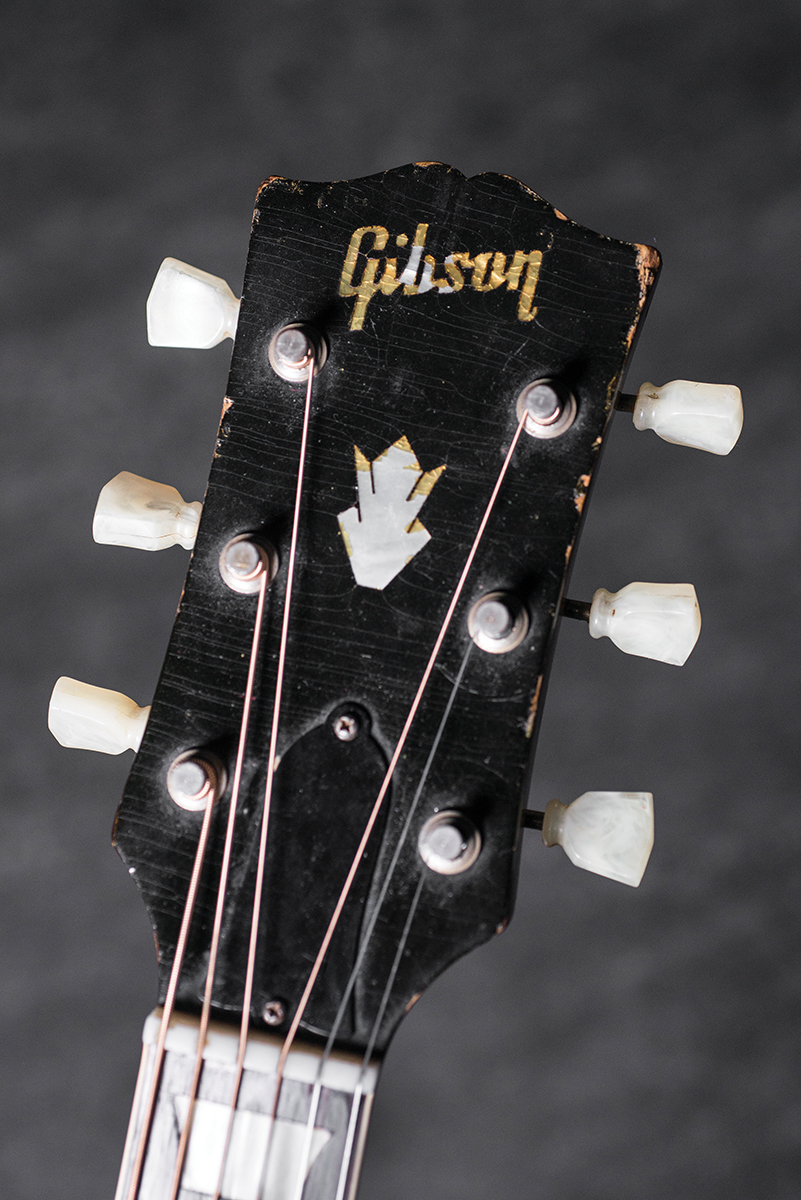
“The records that I love are people sitting in a room together making music. One of my favourite singers and favourite live records is Ray Charles At Newport from 1958. That’s what that band sounds like, live. People to know us as a live band and I wanted the record to hold up to that.”
Fender Princetons feature heavily in the backline for both guitarists
THE SIMPLE THINGS
Nathaniel Rateliff’s gradual move to smaller combos is one that is familiar to many of us. “When I was younger, I bought a Twin, but they’re so heavy,” he winces. “I quickly learned I didn’t want to carry that thing around. Then I moved to a Deluxe Reverb – I still have that same amp, the Silverface, mine is a ’67 or a ’68 – and I love that thing, but it’s so loud! I started using the Princetons, just fell in love with the amp, so then when Fender started to reissue the Silverfaces we started using those, with Weber speakers – I don’t like the Celestion that Fender was putting in there.
Nathaniel and Luke’s (below) pedalboards are small but carefully chosen
“I had a buddy in Denver who rewired ’em and like pulled out the harnesses and put cloth wiring and all handwired, point-to-point stuff in, and I liked ’em but then I found a Blackface Princeton that I got in Oregon, for this record, and I just felt like that was really what I was going for. It’s slightly more jangly, whereas some of the newer ones can be kind of abrasive and I was trying to work that out of my sound, I guess.”
Neither Rateliff nor Luke Mossman rely on a complicated array of stompboxes. “I don’t have tons of effects,” says Rateliff. “I have a pretty minimal board with a pretty simple EP Booster – the more simple it is, the better! I feel that way about amps, too… you never get anything that does everything, but you can get something that does one thing really good. That’s always been what I’ve stuck to.”

